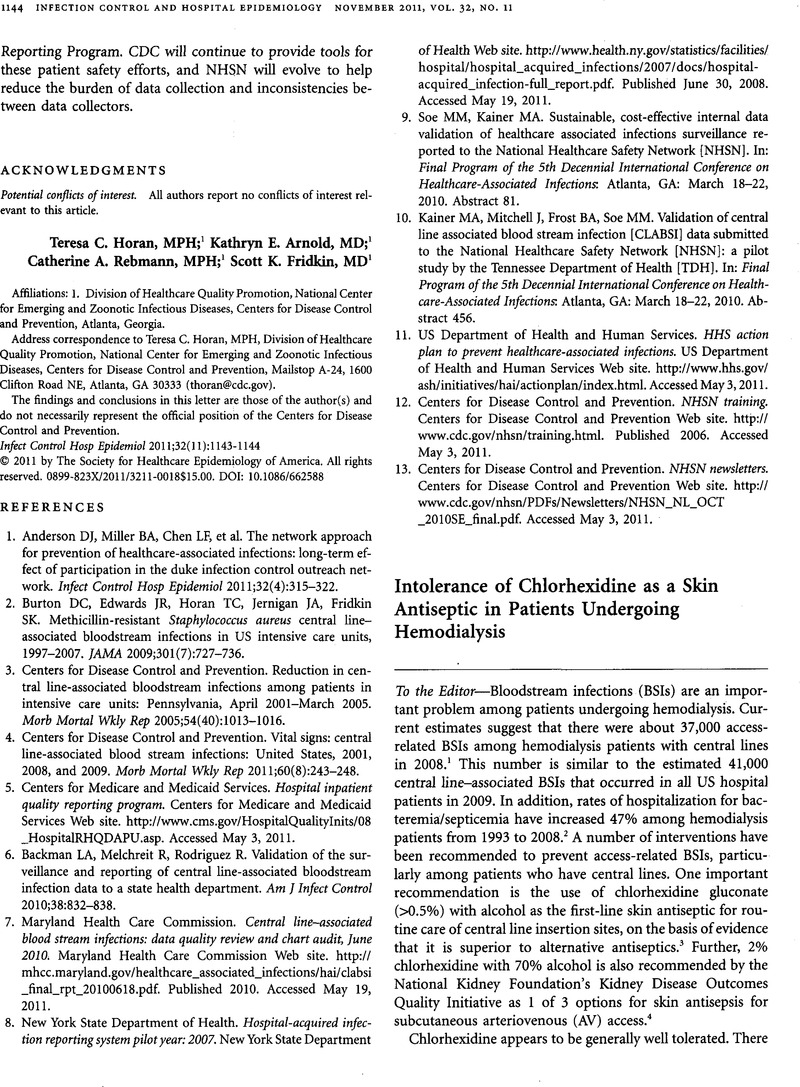Crossref Citations
This article has been cited by the following publications. This list is generated based on data provided by Crossref.
Dinwiddie, Lesley C.
Ball, Lynda
Brouwer, Deborah
Doss‐McQuitty, Sheila
and
Holland, Janet
2013.
What Nephrologists Need to Know about Vascular Access Cannulation.
Seminars in Dialysis,
Vol. 26,
Issue. 3,
p.
315.
Aronson, Jeffrey K.
2014.
A worldwide yearly survey of new data in adverse drug reactions and interactions.
Vol. 35,
Issue. ,
p.
435.
Kapoian, Toros
Meyer, Klemens B.
and
Johnson, Douglas S.
2015.
Infection Prevention and the Medical Director.
Clinical Journal of the American Society of Nephrology,
Vol. 10,
Issue. 5,
p.
863.
Chan, Felix L.
Merchant, Asad A.
Breede, Nikki
Lipszyc, Joshua C.
House, Ronald
and
Tarlo, Susan M.
2019.
Chlorhexidine skin symptoms and allergy in dialysis patients and nurses.
Clinical & Experimental Allergy,
Vol. 49,
Issue. 8,
p.
1158.
Ho, Alex
Zaltzman, Jeffrey
Hare, Gregory M. T.
Chen, Lucy
Fu, Lisa
Tarlo, Susan M.
and
Vadas, Peter
2019.
Severe and near-fatal anaphylactic reactions triggered by chlorhexidine-coated catheters in patients undergoing renal allograft surgery: a case series.
Canadian Journal of Anesthesia/Journal canadien d'anesthésie,
Vol. 66,
Issue. 12,
p.
1483.
TAN, Jia Neng
DA, Yi
HAROON, Sabrina
and
LAU, Titus
2022.
Chlorhexidine – a commonly used but often neglected culprit of dialysis associated anaphylactic reactions (case report).
BMC Nephrology,
Vol. 23,
Issue. 1,
Batta, Sonali
Preston, Allie
and
Bicknell, Lindsay
2023.
New Arteriovenous Skin Rash in a Patient with ESKD on Dialysis.
Kidney360,
Vol. 4,
Issue. 3,
p.
423.
Afsar, Baris
and
Afsar, Rengin Elsurer
2024.
Hypersensitive Reactions During Hemodialysis Treatment: What Do We Need to Know?.
Seminars in Dialysis,
Vol. 37,
Issue. 3,
p.
189.



